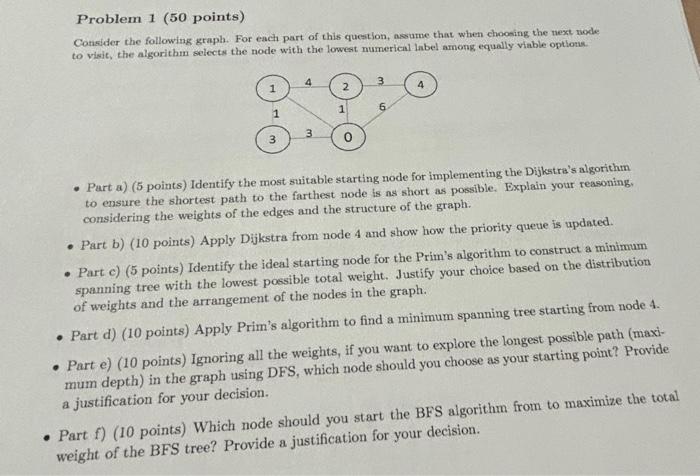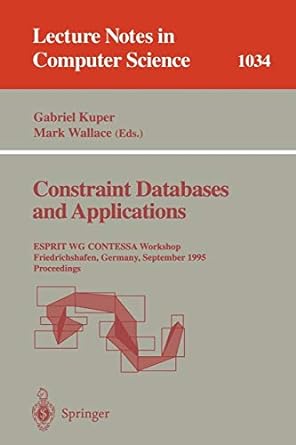answer all parts

Problem 1 (50 points) Consider the following graph. For each part of this question, assume that when chooning the next node to visit, the algorithm selects the node with the lowest numerical Label among equally viable optlons. - Part a) (5 points) Identify the most suitable starting node for implementing the Dijkstra's algorithm to ensure the shortest path to the farthest node is as short as possible. Explain your reasoning. considering the weights of the edges and the structure of the graph. - Part b) (10 points) Apply Dijkstra from node 4 and show how the priority queue is updated. - Part c) (5 points) Identify the ideal starting node for the Prim's algorithm to construct a minimum spanning tree with the lowest possible total weight. Justify your choice based on the distribution of weights and the arrangement of the nodes in the graph. - Part d) (10 points) Apply Prim's algorithm to find a minimum spanning tree starting from node 4. - Part e) (10 points) Ignoring all the weights, if you want to explore the longest possible path (maximum depth) in the graph using DFS, which node should you choose as your starting point? Provide a justification for your decision. Part f) (10 points) Which node should you start the BFS algorithm from to maximize the total weight of the BFS tree? Provide a justification for your decision. Problem 1 (50 points) Consider the following graph. For each part of this question, assume that when chooning the next node to visit, the algorithm selects the node with the lowest numerical Label among equally viable optlons. - Part a) (5 points) Identify the most suitable starting node for implementing the Dijkstra's algorithm to ensure the shortest path to the farthest node is as short as possible. Explain your reasoning. considering the weights of the edges and the structure of the graph. - Part b) (10 points) Apply Dijkstra from node 4 and show how the priority queue is updated. - Part c) (5 points) Identify the ideal starting node for the Prim's algorithm to construct a minimum spanning tree with the lowest possible total weight. Justify your choice based on the distribution of weights and the arrangement of the nodes in the graph. - Part d) (10 points) Apply Prim's algorithm to find a minimum spanning tree starting from node 4. - Part e) (10 points) Ignoring all the weights, if you want to explore the longest possible path (maximum depth) in the graph using DFS, which node should you choose as your starting point? Provide a justification for your decision. Part f) (10 points) Which node should you start the BFS algorithm from to maximize the total weight of the BFS tree? Provide a justification for your decision








